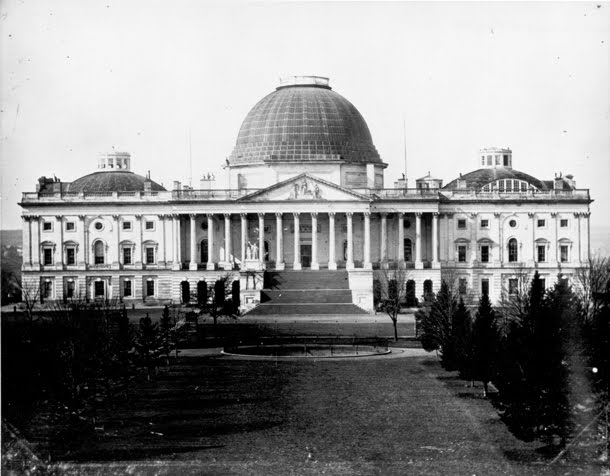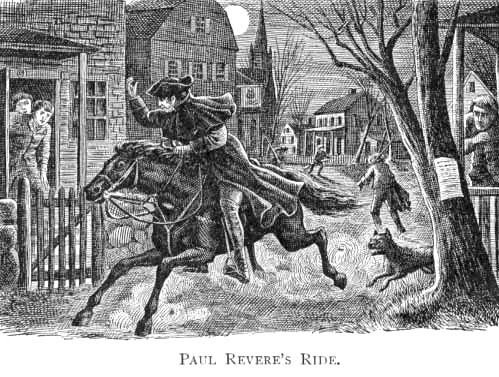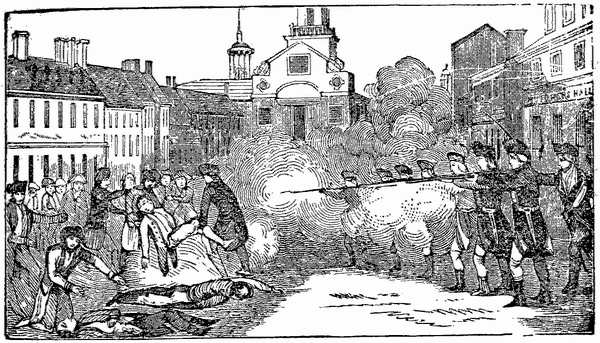From Lew Rockwell.com:
The Origins of Nullification
by Thomas J. DiLorenzo
by Thomas J. DiLorenzo
Recently by Thomas DiLorenzo: How the Lincoln Myth Was Hatched
The defenders of centralized governmental power (a.k.a. tyranny) despise the Jeffersonian idea that the citizens of the states have a right to nullify what they believe to be unconstitutional federal laws. They hate it so much that they falsify history whenever they are forced to discuss it when it becomes news, as it has in recent months. Their favorite falsehood is the myth that nullification was the idea of U.S. Senator John C. Calhoun, the principal architect of South Carolina’s nullification of the federal "Tariff of Abominations" in 1832. This tariff, sponsored by Henry Clay, raised the average tariff rate to 45% with tariffs on some items exceeding 100%. Since almost all of the items covered by the tariff were manufactured in the Northern states, only Northern manufactures would benefit from them by charging higher prices once international competition was prohibited by the tariff on imports. South Carolinians, Virginians, and other Southerners correctly believed that the tariff was a break with the constitutional compact that outlawed discriminatory taxation. They were correct to interpret the Tariff of Abominations as an attempt by the neo-Puritanical New England "Yankees" to use the power of the central state to plunder them (and all consumers for that matter). That was a trend they sought to nip in the bud with their nullification law.
The defenders of this particular form of legal plunder usually heap the worst calumny imaginable on Calhoun, a former vice president of the United States and one of America’s most brilliant political theorists (read his Disquisition on Government), by associating him with slavery and nothing but slavery. The not-so-veiled implication is that nullification was some kind of white supremacist plot. Associating nullification with Calhoun and only Calhoun, and then relentlessly smearing him, is nothing more than a dishonest diversionary tactic on the part of the defenders of consolidated or centralized governmental power, the purpose of which is censorship of all discussion of the nullification of unconstitutional federal laws.
The idea of nullification was actually popular among the American colonists, long before Calhoun’s time, but is most closely associated with Thomas Jefferson and James Madison, authors of the Kentucky and Virginia Resolves of 1798. Jefferson authored the Kentucky Resolve at the request of the Kentucky legislature as a way of nullifying the hated Sedition Act that was being enforced by President John Adams. This law essentially outlawed free political speech in America.
As soon as the Federalist Party gained power it outlawed free speech, in clear violation of the First Amendment of the U.S. Constitution. The spark that ignited this totalitarian impulse was an editorial by the grandson of Benjamin Franklin, Benjamin Franklin Bache, editor of the Philadelphia Aurora newspaper. Bache was a follower of Jefferson and his Democratic-Republican Party, and was outspokenly opposed to the Federalist program of protectionist tariffs, central banking, corporate welfare, high taxes, and a large public debt. In an editorial he called John Adams "old, querulous, bald, blind, crippled, toothless Adams." Federalists responded in kind. Noah Webster called the Democratic-Republicans "the refuse, the sweepings of the most depraved part of mankind . . ."
Abigail Adams is said to have gone berserk over Bache’s characterization of her husband, and she and the Federalist newspapers began calling for Bache’s punishment. The result was the Alien and Sedition Acts. The Sedition Act was enacted on July 14, 1798, and made it a crime to publish "false, scandalous, and malicious writing against the government or its officials." Of course, the government itself would solely decide what constituted improper and illegal speech, as was the case in the Soviet Union and all other totalitarian states during the twentieth century. The law was written so as to expire on the day that John Adams left office so that it would only be used against Jefferson’s Democratic-Republican Party.
Many of Jefferson’s followers resented the ostentatious displays of king-like grandeur that the Adams’s were known for. For example, according to the Wikipedia entry on the Alien and Sedition Acts, in July of 1798 President John Adams and his wife Abigail were making their way back home to Braintree, Massachusetts in elaborate carriages as part of a parade, with canons firing to celebrate their entry into every city and town along the way. A man named Luther Baldwin was sitting in a pub in Newark, New Jersey where, upon hearing the canon fire, said "There goes the president and they are firing at his arse." He also said that he didn’t care if "they fired through his arse." For this he was sent to prison and assessed fines and court costs.
In November of 1798, a man named David Brown put up a liberty pole in Dedham, Massachusetts with the words, "No Stamp Act, No Sedition Act, No Alien Bills, No Land Tax [referring to Hamilton’s national property tax], Downfall to the Tyrants of America; Peace and Retirement to the President; Long Live the Vice President [Jefferson]." For this he was fined and sentenced to eighteen months in prison.
Several dozen newspaper writers who were supporters of Jefferson were arrested under the Sedition Act for criticizing the government. In addition, Federalist party mobs often attacked newspapers and newspaper editors who were sympathetic to the Democratic-Republican Party or who criticized John Adams. Federalist Roger Griswold, a congressman from Connecticut, attacked fellow Congressman Mathew Lyon of Vermont by beating him with a hickory cane on the floor of the House of Representatives after Lyon criticized the Federalists as being "in opposition to the interests and opinions of nine-tenths of their constituents."
After Lyons wrote a newspaper article suggesting that Adams had "an unbounded thirst for ridiculous pomp, foolish adulation, and selfish avarice," the Adams administration convened a grand jury and indicted Lyons. After walking the Revolutionary War veteran through the town of Vergennes, Vermont in shackles, he was imprisoned. He ran for reelection from prison and won handily.
All of this is what motivated Thomas Jefferson to author the Kentucky Resolve of 1798, accompanied by Madison’s Virginia Resolve, which was almost identical (See William J. Watkins, Jr., Reclaiming the American Revolution: The Kentucky and Virginia Resolutions and Their Legacy). Section One of Jefferson’s Kentucky Resolve reads as follows:
Resolved, that the several States composing the United States of America, are not united on the principles of unlimited submission to their General Government; but that by compact under the style and title of a Constitution For the United States and of amendments thereto, they constituted a General Government for special purposes, delegated to that Government certain definite powers, reserving each State to itself, the residuary mass of right to their own self Government; and that whensoever the General Government assumes undelegated powers, its acts are unauthoritative, void, and of no force . . . . That the Government created by this compact was not made the exclusive or final judge of the extent of the powers delegated to itself; since that would have made its discretion, and not the Constitution, the measure of its powers; but that as in all other cases of compact among parties having no common Judge, each party has an equal right to judge for itself, as well as of infractions as of the mode and measure of redress.
Madison’s Virginia Resolve, in turn, declared that "in case of deliberate, palpable, and dangerous exercise of other powers, not granted by the said compact [i.e., the Constitution], the States who are parties thereto, have the right and are duty bound, to interpose for arresting the progress of the evil, and for maintaining within their respective limits, the authorities, rights and liberties appertaining to them."
With Jefferson’s election as president, the Sedition Act ended at midnight on March 3, 1801, the moment Jefferson became president. Upon assuming the office, Jefferson ended all ongoing prosecutions and pardoned those who had been convicted under the Sedition Act.
South Carolina’s nullification of the Tariff of Abominations in 1832 was not even the second example of the principle of nullification being implemented. Far from it. After President Jefferson enacted a trade embargo in response to British theft of American ships and the kidnapping of American sailors, New England legislatures nullified the embargo act by quoting Jefferson himself. For example, on February 5, 1809, the Massachusetts legislature declared that the embargo was "not legally binding on the citizens of the state" and denounced the law as "unjust, oppressive, and unconstitutional" (See James J. Kilpatrick, The Sovereign States). All of the New England states (where the shipping industry was concentrated), plus Delaware, officially nullified the embargo act.
When the War of 1812 broke out (also the work of Henry Clay as much as anyone), the New England Federalists essentially seceded from the union by not participating in the war. Their political vehicle was nullification. As stated by the Connecticut state assembly:
[I]t must not be forgotten that the state of Connecticut is a FREE SOVEREIGN and INDEPENDENT State; that the United States are a confederated and not a consolidated Republic. The Governor of this State is under a high and solemn obligation, ‘to maintain the lawful rights and privileges thereof, as a sovereign, free and independent State,’ as he is ‘to support the Constitution of the United States,’ and the obligation to support the latter imposes an additional obligation to support the former. The building cannot stand, if the pillars upon which it rests, are impaired or destroyed.
This statement by the Connecticut state assembly echoed Jefferson’s states’ rights interpretation of the Constitution, as beautifully stated in the Kentucky Resolve. This places modern-day "conservatives" and "neo-conservatives" in a conundrum: They would like to nullify "Obamacare" and much of the other socialistic legislation that is being passed, and the movement in favor of state nullification as the vehicle for doing so is gaining more and more momentum by the day (see the Web site of the Tenth Amendment Center). But to embrace nullification is to associate oneself with the Jeffersonian compact theory of the state that was overthrown at gunpoint by the Lincoln administration, after several generations of nationalist/consolidationist/Yankee politicians failed to do so through the normal, non-violent political process. As Jefferson clearly stated in the Kentucky Resolve, the states are free, independent, and sovereign. They therefore have a right of secession as well as nullification. Jefferson himself wrote frequently in favor of a states’ right of secession. Indeed, the Declaration of Independence was nothing if it was not a declaration of secession from the British Empire.
An easy prediction is that the neocons will in fact advocate nullification as long as the Democrats are in power. But when they reassume power they will revert back to their cornerstone ideology of Lincoln idolatry, centralization, militarization, censorship, spying, torturing, endless warmongering, and denunciation of nullification and all other forms of the American tradition of states’ rights, otherwise known as federalism.
August 7, 2010
Thomas J. DiLorenzo [send him mail] is professor of economics at Loyola College in Maryland and the author of The Real Lincoln; Lincoln Unmasked: What You’re Not Supposed To Know about Dishonest Abe and How Capitalism Saved America. His latest book is Hamilton’s Curse: How Jefferson’s Archenemy Betrayed the American Revolution – And What It Means for America Today.
Copyright © 2010 by LewRockwell.com. Permission to reprint in whole or in part is gladly granted, provided full credit is given.
Friday, August 6, 2010
Subscribe to:
Post Comments (Atom)
.gif)






























No comments:
Post a Comment